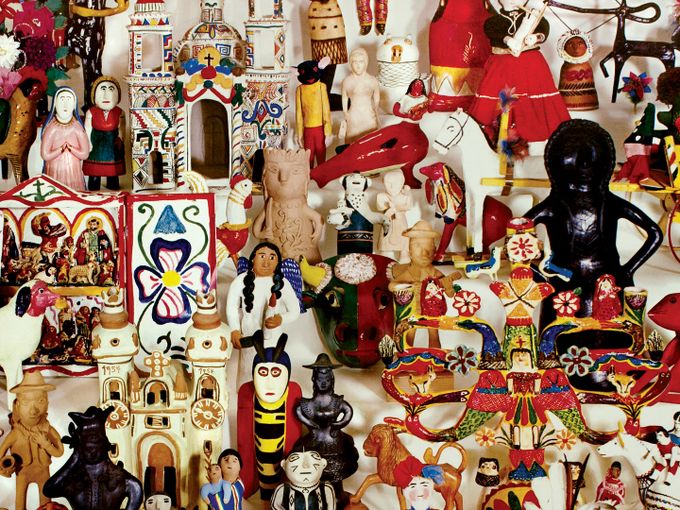How Charles and Ray Eames ‘Married’ Music to Films
A Vitra Anecdote

The mid-century designer duo Charles and Ray Eames took their work very seriously. They worked seven days a week, from morning to evening, over a span of more than three decades. But their work in the Eames Office, located at 901 Washington Boulevard in Venice, California, also involved a great amount of pleasure. The Eameses were what they worked, and they were what they produced - and the type of music they used, and listened to, was what they found most appropriate for the work they produced.
Charles and Ray Eames used music mainly for their extensive production of educational films. They liked jazz, for example the ‘Stars of Jazz’ program, and used jazz music in their films. They also had a taste for folk music from different cultures, as well as classical music – and these types of music were also used in their films.
In all aspects of their work, it was natural for Charles and Ray Eames to engage with people or things they could learn from. Their interest in music, and how music could be used in their films, was no exception. They combined film and music as communication tools for their furniture designs, along with educational themes like mathematics, computers, toys, and other topics that had somehow attracted their attention. As designers who were quite experienced with the use of a camera, they approached several musicians throughout their lifetimes to compose music for their films.
In all aspects of their work, it was natural for Charles and Ray Eames to engage with people or things they could learn from. Their interest in music, and how music could be used in their films, was no exception. They combined film and music as communication tools for their furniture designs, along with educational themes like mathematics, computers, toys, and other topics that had somehow attracted their attention. As designers who were quite experienced with the use of a camera, they approached several musicians throughout their lifetimes to compose music for their films.


A Communications Primer (1953) was the first film to directly include outside consultants, and for its musical score, Charles und Ray Eames turned to the talented young composer Elmer Bernstein, with whom they soon developed a warm professional and personal friendship. Over the years of their collaboration, Elmer Bernstein composed more than 30 pieces of music for their films, including Toccata For Toy Trains (1957), Think (1964), Tops (1969) and Powers of Ten (1977).
Elmer Bernstein said that the Eameses "married the music to their films". The music was usually composed before the film was finalised. It was a common procedure for the film to be edited so that it fit the music. Charles and Ray Eames often worked in this way: first they had an idea for a film; then the composer became involved and was introduced to the idea; then he created the music – normally with no interference from Charles and Ray – and finally the film clips were arranged to the rhythm of the music. This was the framework for Elmer Bernstein’s description of how Charles and Ray Eames ‘married’ the music to the film.
"They were what they worked, and they were what they produced" was Elmer Bernstein’s description of the Eameses. He claimed that Charles Eames was the only true genius he ever worked with. He named his second son after Charles Eames – calling him Gregory Eames Bernstein.
Elmer Bernstein said that the Eameses "married the music to their films". The music was usually composed before the film was finalised. It was a common procedure for the film to be edited so that it fit the music. Charles and Ray Eames often worked in this way: first they had an idea for a film; then the composer became involved and was introduced to the idea; then he created the music – normally with no interference from Charles and Ray – and finally the film clips were arranged to the rhythm of the music. This was the framework for Elmer Bernstein’s description of how Charles and Ray Eames ‘married’ the music to the film.
"They were what they worked, and they were what they produced" was Elmer Bernstein’s description of the Eameses. He claimed that Charles Eames was the only true genius he ever worked with. He named his second son after Charles Eames – calling him Gregory Eames Bernstein.
Publication date: 25.9.2018
Author: Stine Liv Buur in collaboration with the Eames Office
Images: © Eames Office, LLC


